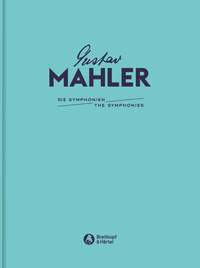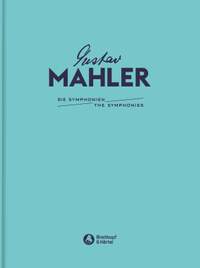Recommended Sheet Music,
Mahler: Symphony No. 3 from Breitkopf & Härtel
Gustav Mahler: Symphony No. 3
 The first text-critical edition of Mahler’s most extensive work, his Symphony No. 3, is a further milestone in Breitkopf & Härtel’s project, Mahler – The Symphonies. Many sources were consulted for this edition, including the conducting scores used for early performances by Mahler, Mengelberg, and other conductors, as well as the parts of the Vienna Philharmonic used by Mahler, Bruno Walter, and many additional great conductors right up to the present. Furthermore, another set of parts from Mahler’s personal possession was consulted. These sources significantly expand the source base in comparison with that of the 1974 Kritische Gesamtausgabe, and guarantee a reliable, scholarly valid music text, shedding new light on Mahler’s complex process of revision.
The first text-critical edition of Mahler’s most extensive work, his Symphony No. 3, is a further milestone in Breitkopf & Härtel’s project, Mahler – The Symphonies. Many sources were consulted for this edition, including the conducting scores used for early performances by Mahler, Mengelberg, and other conductors, as well as the parts of the Vienna Philharmonic used by Mahler, Bruno Walter, and many additional great conductors right up to the present. Furthermore, another set of parts from Mahler’s personal possession was consulted. These sources significantly expand the source base in comparison with that of the 1974 Kritische Gesamtausgabe, and guarantee a reliable, scholarly valid music text, shedding new light on Mahler’s complex process of revision.
In unprecedented comprehensiveness, the editorial report contains references from Mahler’s letters and other authentic documents indispensable for an understanding of the work and its interpretation. The orchestral parts feature optimal readability and practicality. Rounding off the edition is the introductory essay Mahler as Symphonist, together with a knowledgeable preface by Constantin Floros, doyen of Mahler research.
The latest addition to Breitkopf & Härtel’s project Mahler - The Symphonies, Mahler's Symphony No. 3.
Paperback full score, vocal score, set of parts, and individual parts also available here.
Available Format: Sheet Music
Other publications in Mahler – The Symphonies
Gustav Mahler: Symphony No. 1 and Symphonic Movement for orchestra “Blumine” (Final Version 1910)
Full Score (Hardback)
The Symphony No. 1 (originally in five movements) was first performed in Budapest in 1889, but the premiere as well as two further performances in Hamburg and Weimar turned out to be a fiasco. After 1894 Mahler removed the Blumine movement. Until the last performance under his direction in New York in 1909, Mahler made revisions again and again. This edition strives to present a reliable music text of the final extant version that in 1910 Mahler corrected and deemed accurate for the new print. The Editorial Report gives detailed information on the provenance and evaluation of the sources as well as authentic annotations on performance practice. Individual comments document editorial interventions and deviations from current editions.
Full score and complete performance material for Blumine, and Symphony No. 1 also available here.
Available Format: Sheet Music
Of all his symphonies, Mahler gave the Fourth, his favorite and problem child, his most particular attention. The Heavenly Life, a humoresque composed in 1892 for soprano and piano, which he already wanted to use in the final movement of the Third Symphony under the title What the Child Tells Me, ultimately became the nucleus and final movement of the Fourth. Even after publication in 1901, Mahler kept repeatedly refining the orchestration. His maxim “not without my retouching” led to a whole series of revised reprints. It is probably no coincidence that Mahler performed the Fourth Symphony in his last two New York concerts in February 1911, using the opportunity to review once again the score and parts. This performance material with his “retouching” served as the main source for the new edition. Furthermore, included for the first time were corrections and annotations in conjunction with performances of the Fourth, which Mahler entered into the scores of conductors such as Mengelberg and Wickenhauser.
Full score and complete performance material available here.
Available Format: Sheet Music





